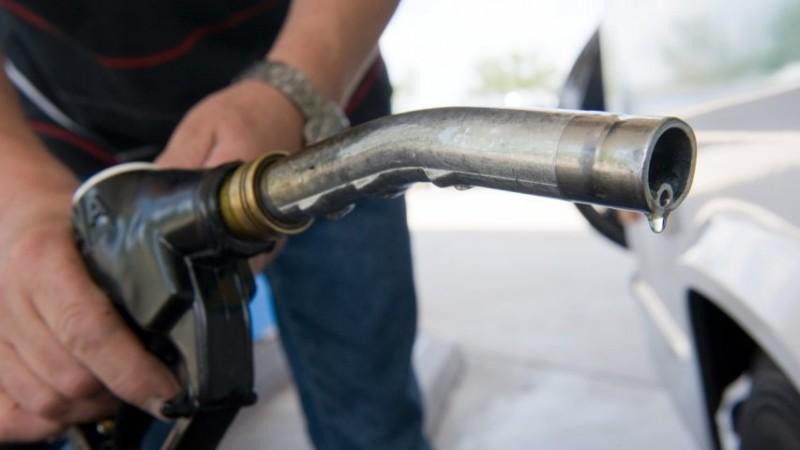
With crude prices hitting a three-year high and the outlook hardening further, Indians need to brace for a continued rise in fuel prices. Unless, of course, the Central government decides to roll back the steep excise levies it imposed during a softer price regime.
Over the last three years, Indian consumers have bemusingly watched fuel prices rising in an inverse proportion to the movement in crude prices — global as well as Indian basket. And quite interestingly this coincided with the landmark electoral victory of Narendra Modi, who decimated the Opposition by running a campaign on an ultra-nationalist plank.
Soon after Modi's election as prime minister, crude prices started falling. In about a year and half after Modi came to power, crude fell below $30. The last time crude oil was available for this low a price was exactly 15 years ago, in 2001.
However, Indian fuel prices started showing a sticky tendency — they wouldn't fall in tandem with the drop in global oil markets.
Consumers never bothered for a while, and then eventually got used to it. Fuel prices assumed a cathartic value, as if it were. A sacrifice for Modi's vision of nation-building — Make in India, Swachch Bharat and other hobby horses ran on expensive fuel.
Not to say there haven't been feeble outcries over the Great Indian fuel fleece. But all this fell on deaf ears and then came the daily pricing of petrol and diesel. This looked quite fanciful, in line with an economy that just embraced digital and demonised currency notes. At the end of the day, it just became a marvellous conditioning tool that robbed the consumers of even the price coordinates.
Now what happens next with prices actually hardening and the outlook appearing daunting?
Prices are soon set to race past the record high of Rs 81.75 (Mumbai), marked in August 2014. Petrol prices are near the 2014 levels when crude prices were several notches higher. West Texas Intermediate, or the US benchmark crude, was $101 in August 2014. By comparison, WTI crude futures were at $64.81 a barrel on Monday while Brent hovered around $70.
Where are crude prices heading and what is the logical outcome of a stiffening oil market on the fuel prices scenario in India? It looks like a continued high-price scenario is going to be the new normal. Petrol at Rs 100? That doesn't look like an absurd take unless the government decides to withdraw hefty excise duties on fuel.
Petrol prices are inching closer to Rs 80 a litre — the highest in three years — while the price of diesel has also hit a record high. Petrol prices in Mumbai topped the September 2014 high of 79.48 while diesel has risen past a high of 62.37 per litre.
Crude Price Outlook for 2018
The tightening of the oil markets last year was due mainly to the supply cut orchestrated by OPEC and Russia. These cuts, which came into force at the start of the last year, helped revive crude prices. The supply limits will be in place throughout 2018, signalling a harder price environment.
A Morgan Stanley report agrees with such a scenario, saying Brent crude will hit $75 per barrel by the third quarter of 2018.
Another round of oil price spike is not predicted by anyone, but a certain hardening of the market is the likely outcome for 2018. Apart from demand pressures and other external factors impacting prices, supply-side pressures are clearly seen existing in 2018.
A report by Bank of America Merrill Lynch said the supply deficit is likely to rise this year. "We now see a deficit of 430,000 barrels per day (bpd) in 2018 compared to 100,000 bpd prior," the bank said in a research note, Reuters reported. The report also said the average prices for Brent crude will hit $64 per barrel in 2018 compared with $56 in the previous year.
India fuel price scenario
In June 2014, WTI crude was nearly $110 per barrel, from where the descent started. By December that year, the prices came down to around $55 per barrel. WTI crude ended the year at $53.27 per barrel. One year down the line, prices fell below $30. But none of this was passed on to consumers.
While the prices of Indian basket crude fell 74 percent between June 2014 and January 2016, the average drop in fuel prices in Indian cities was only 20 percent.
If crude hits $88 this year, as some analysts have said, where would fuel prices take perch? According to calculations by the US Energy Information Administration (EIA), the price of crude can potentially go up to as much as $85 per barrel by December 2018.
A logical 30 percent hike should send petrol prices soaring past Rs 100. Now the question is, will the Central government allow that to happen in its final year? Or will it bite the bullet and roll back the windfall at the pump that oils statecraft? That's a tough choice, as the government levied excise duties on fuel running into several lakh crores over the last few years.
Lok Sabha Opposition leader Mallikarjun Kharge puts the figure down at Rs 5.5 lakh crore. According to him, the Central government increased excise duty on diesel by 386 percent and that on petrol by 126 percent. A further tightening of the oil market will only make matters worse for the BJP and the government in the run-up to an election year.
Options are dire and damning. The government's oil import bill is booming, upwardly moving fuel price are fuelling an inflationary cycle, GDP forecasts are already gloomy and big-ticket commitments like bank recapitalisation are an additional burden.
Fuel price prediction is risky business, but Indian consumers might really want to brace for tougher days.









